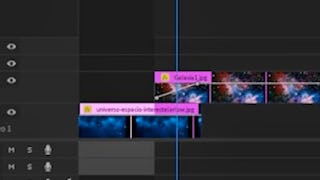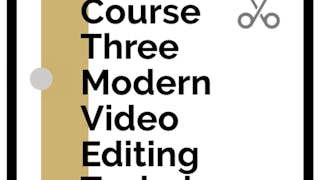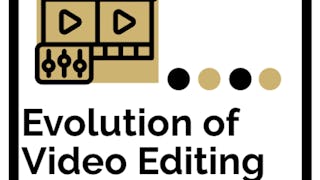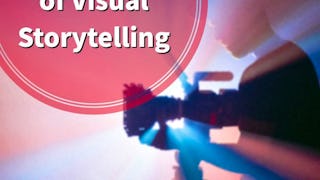Explore the origins behind the techniques and crafts of video editing. Uncover the methods discovered by the old masters, from the Lumiere Brothers to Georges Melies, Edwin Porter, D.W. Griffith, Sergei Eisenstein and even Charlie Chaplin. Whether you’re a beginner or have been editing for years, enhance your skills and gain fresh insights into editing techniques. Understand what the early filmmaking pioneers discovered about editing, learning how to rearrange their footage into cohesive narratives and setting the standards for modern video editing. Engage in examples among the earliest films, demonstrations, interactive peer reviews and online multimedia resources. Showcase your newfound knowledge through quizzes and exercises, and open doors to career opportunities and connections. All you need is access to basic editing software and some rudimentary skills to use it. Presented by CU Boulder Journalism Instructor Paul Daugherty and CU Boulder College of Media, Communication and Information Media Technology Manager Emilie Johnson, The Foundations of Video Editing Techniques will take you back to where it all started, to the silent era of filmmaking, an era that inspired many filmmakers across generations.


The Foundation of Video Editing
This course is part of The Evolution of Video Editing Techniques Specialization


Instructors: Emilie Johnson
4,320 already enrolled
Included with
Recommended experience
What you'll learn
Define editing terminology and explain fundamental editing techniques.
Describe the features of editing software and demonstrate basic editing skills.
Identify examples of continuity editing and montage in film scenes.
Describe the impact of film pioneers on the evolution of editing techniques and explain how these innovations influenced modern editing practices.
Skills you'll gain
Details to know

Add to your LinkedIn profile
See how employees at top companies are mastering in-demand skills

Build your subject-matter expertise
- Learn new concepts from industry experts
- Gain a foundational understanding of a subject or tool
- Develop job-relevant skills with hands-on projects
- Earn a shareable career certificate

There are 4 modules in this course
Welcome to the first module of The Foundation of Video Editing where you will learn about the origin of modern video editing techniques. We’ll share with you our recommendations for editing software that is either free or affordable and introduce you to the grammar of editing. We’ll also introduce you to the pioneers of film in the late 19th and early 20th centuries and explain their innovations in editing, which changed empirical reality as we know it. Understand how jump cuts originated and were subsequently hidden by inserts and cutaway shots. Apply your knowledge in exercises where you can identify and use jump cuts, and with insert and cutaway shots within a scene.
What's included
9 videos4 readings1 assignment2 peer reviews
Welcome to Module 2 in The Foundation of Video Editing where we’ll explore how the fundamental unit of editing shifted from the scene to the shot. We’ll introduce you to film pioneers who innovated editing styles like parallel action and cross-cutting. Learn the concept of the 180-Degree Rule, and how Dutch filmmakers cut their shots together on the action. Filmmakers like D.W. Griffith showed how narrative problems can be solved with a simple close-up. In exercises where we provide the footage, you can demonstrate parallel editing using footage from one of the earliest films, assemble cross-cuts, and edit sequences that will make your narratives more compelling.
What's included
7 videos3 readings1 assignment3 peer reviews
Welcome to Module 3. Delve into the subjective innovations of editing with the point-of-view shot, where it becomes possible to tell visual stories from the narrator’s psyche. Explore a new era of subjective cinema with German Expressionism and learn about psychological editing. We’ll also explore how to smoothly transition from one shot to the next by cutting on movement. Discover how some silent filmmakers explored ways to convey a character’s inner thoughts without using words. Finally, we’ll look at the fast-paced editing style of slapstick comedy and the innovations made by global superstar Charlie Chaplin. We’ll provide you with footage to demonstrate what you learned, cutting on movement, and even using smash cuts to contrast between scenes with jarring edits.
What's included
5 videos3 readings1 assignment2 peer reviews
In the final module of the course, we’ll take a deep dive into the Soviet influence on filmmaking and the theories of montage as conceived by Russian filmmakers Sergei Eisenstein and Vsevolod Pudovkin. Learn about the principles of montage, how it can be used to juxtapose shots with contrasting content, to convey emotions and ideas, and even to make symbolic connections between scenes. The montage can be used to condense time, communicate exposition, and can guide the audience’s emotions when the editing is set to music. We’ll provide you with footage with the media so you can take a crack at editing your own music montage.
What's included
3 videos3 readings1 assignment1 peer review
Earn a career certificate
Add this credential to your LinkedIn profile, resume, or CV. Share it on social media and in your performance review.
Offered by
Explore more from Music and Art
 Status: Free Trial
Status: Free Trial Status: Free Trial
Status: Free TrialUniversity of Colorado Boulder
 Status: Free Trial
Status: Free TrialUniversity of Colorado Boulder
 Status: Free Trial
Status: Free TrialUniversity of Colorado Boulder
Why people choose Coursera for their career





Open new doors with Coursera Plus
Unlimited access to 10,000+ world-class courses, hands-on projects, and job-ready certificate programs - all included in your subscription
Advance your career with an online degree
Earn a degree from world-class universities - 100% online
Join over 3,400 global companies that choose Coursera for Business
Upskill your employees to excel in the digital economy
Frequently asked questions
To access the course materials, assignments and to earn a Certificate, you will need to purchase the Certificate experience when you enroll in a course. You can try a Free Trial instead, or apply for Financial Aid. The course may offer 'Full Course, No Certificate' instead. This option lets you see all course materials, submit required assessments, and get a final grade. This also means that you will not be able to purchase a Certificate experience.
When you enroll in the course, you get access to all of the courses in the Specialization, and you earn a certificate when you complete the work. Your electronic Certificate will be added to your Accomplishments page - from there, you can print your Certificate or add it to your LinkedIn profile.
Yes. In select learning programs, you can apply for financial aid or a scholarship if you can’t afford the enrollment fee. If fin aid or scholarship is available for your learning program selection, you’ll find a link to apply on the description page.
More questions
Financial aid available,
¹ Some assignments in this course are AI-graded. For these assignments, your data will be used in accordance with Coursera's Privacy Notice.

